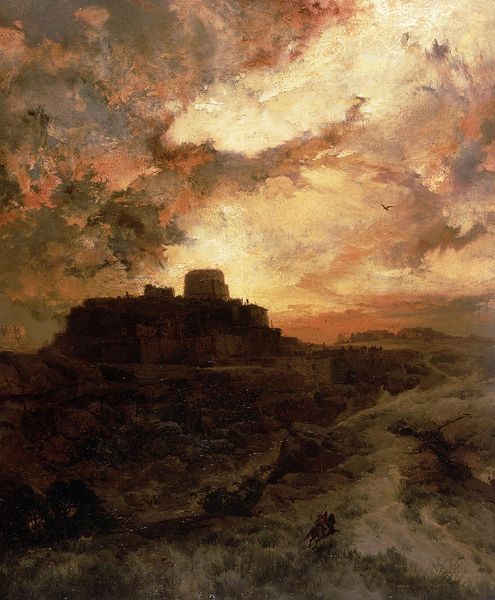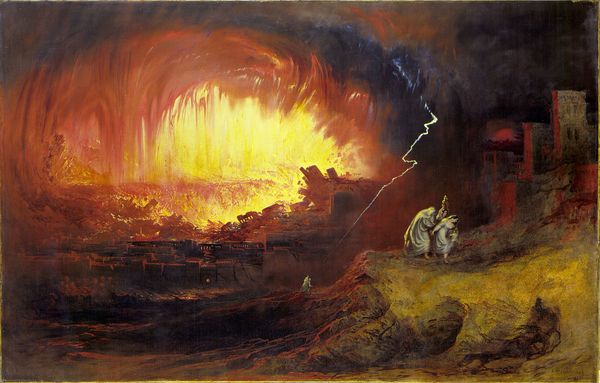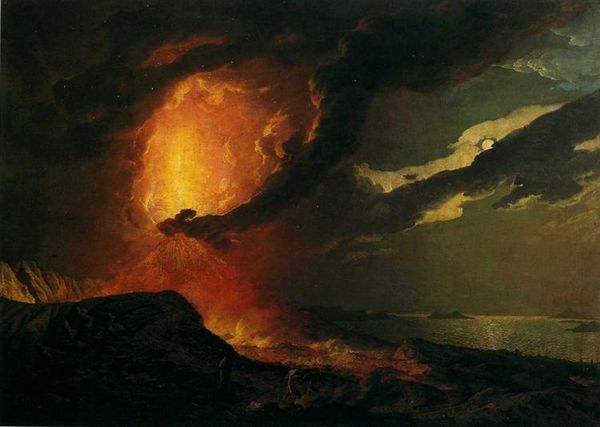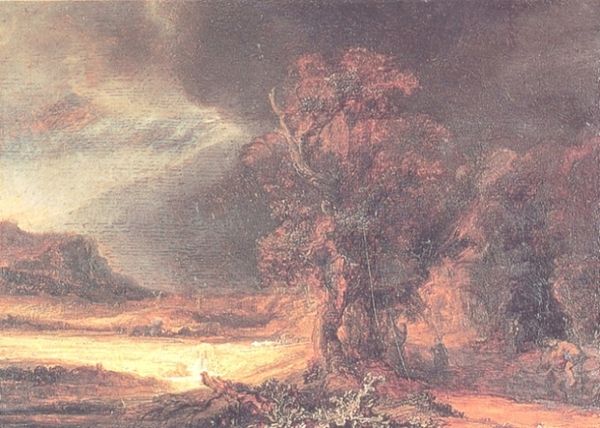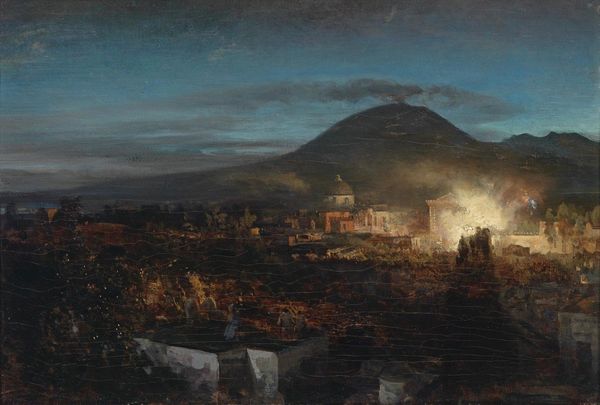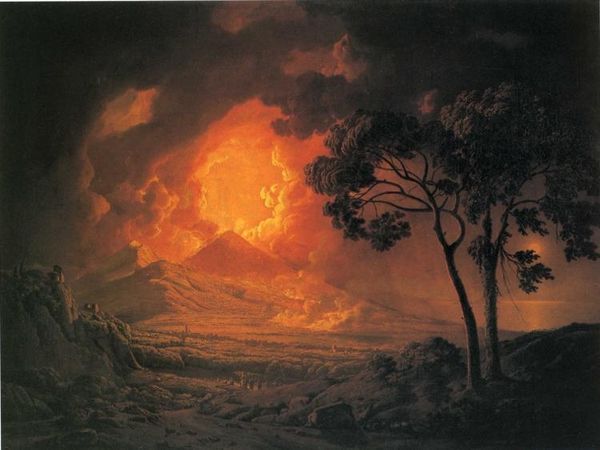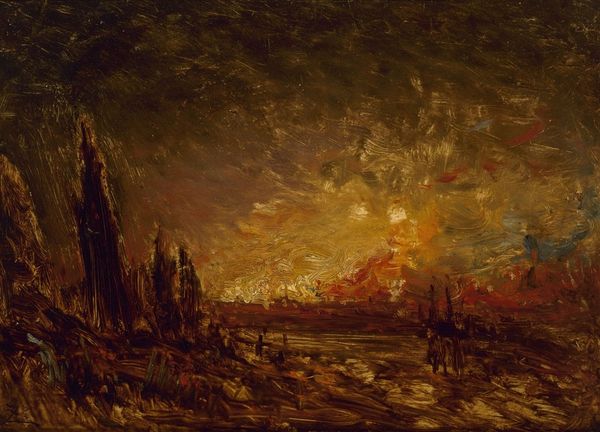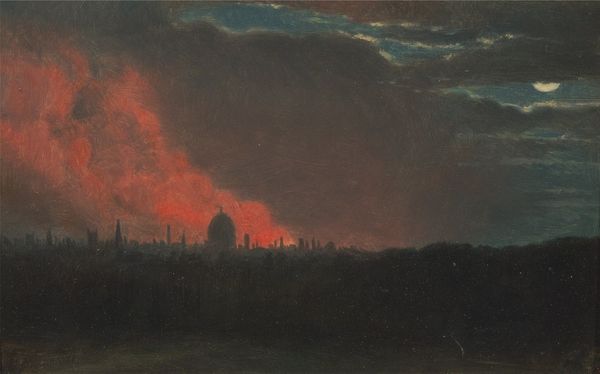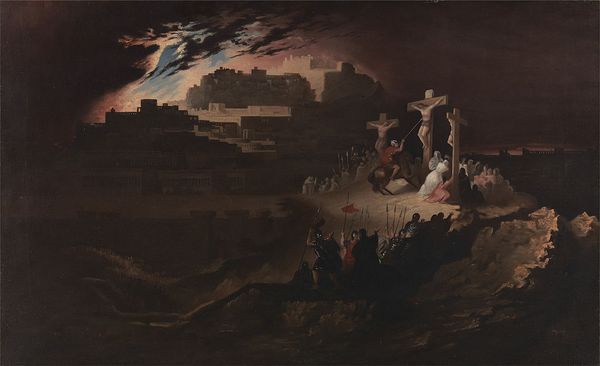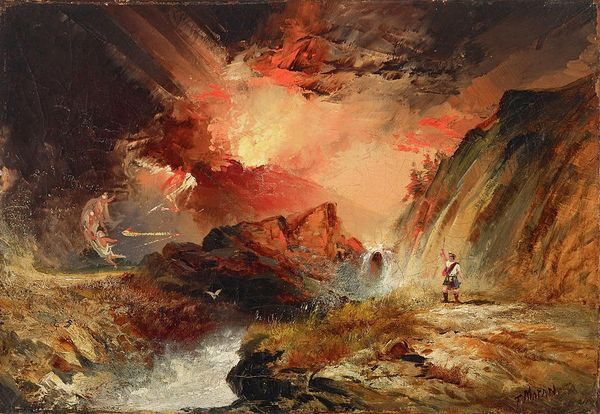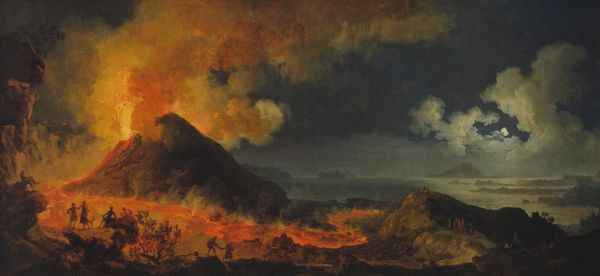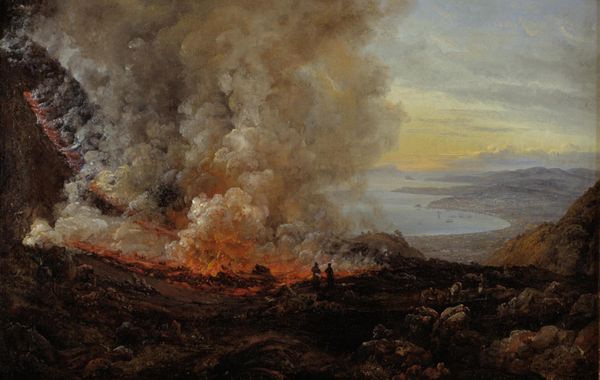
painting, oil-paint
#
neoclacissism
#
painting
#
oil-paint
#
landscape
#
romanticism
#
cityscape
#
history-painting
Copyright: Public Domain: Artvee
Curator: This dramatic oil painting is entitled "The Annual Girandola at the Castel Sant’Angelo, Rome" by Joseph Wright of Derby. There's no exact date assigned, but it places us firmly within the late 18th-century sensibility. Editor: It strikes me as surprisingly theatrical. That towering tree in the foreground seems like it's been strategically placed on a stage set, drawing your eye towards the spectacle of the distant fireworks. There is an underlying somber quality despite the festivities; the colors are quite subdued. Curator: The painting really captures the essence of the Girandola, an annual fireworks display in Rome. Consider it not merely a depiction of fireworks but the representation of continuity, perhaps the symbolic victory of light over the darkness. You can see how it highlights both the grandeur and transience associated with Rome, its empire, and the church, now expressed as sheer display. Editor: I'm immediately drawn to how Wright uses light to articulate power dynamics. While it is undoubtedly about beauty and spectacle, it also seems to quietly comment on how authority stages these large displays of control. Curator: Exactly, and this moment ties into larger issues present during the time. He painted in the period known as the Grand Tour. Think of Wright, therefore, processing his own understanding of how culture and power converge, both within and beyond Italy. The dark and prominent trees in the front add a stark quality and a sense of mystery. The fireworks exploding, as a motif, remind the viewer of the ephemeral nature of celebration itself. Editor: Precisely, the use of shadow is as potent as the illumination itself. Perhaps it's suggestive of a nuanced awareness of what lay beneath the spectacle of empire and faith – alluding to those obscured by history. Even more so, the ordinary residents who exist beyond the showy exhibition? The work almost serves as an inquiry on the cost of the grandiose nature of such displays. Curator: That shadow evokes deeper meanings. It leaves us contemplating the nature of power, its presentation, and how these images persist over time. Editor: It is fascinating how much a "pretty picture" can reveal about history’s darker corners and continue to be a conversation starter about those themes even today.
Comments
No comments
Be the first to comment and join the conversation on the ultimate creative platform.
